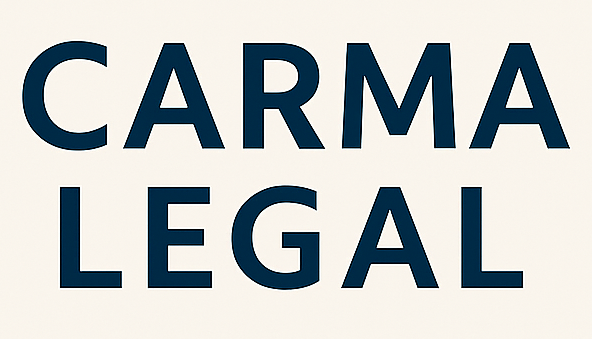Understand product liability
Facing injuries due to a faulty consumer good or unsafe machinery can feel overwhelming. When you’re harmed by a defective device, a defective product attorney can help you recover compensation and hold negligent companies accountable. In third-party liability cases, you step outside the workers’ compensation system and pursue legal action against manufacturers, distributors, or retailers whose reckless design, production, or marketing caused your injury. Understanding product liability law is the first step to building a strong claim. A skilled product liability lawyer will evaluate your case and advise on the best path forward.
Types of defects
According to research by The Sloan Firm, three primary defect categories can render a product unsafe:
Design defects
A flaw in the product’s original design that makes every unit inherently dangerous, for example:
- A ladder engineered to collapse under normal weight
- An electrical device prone to overheating due to flawed circuitry
- A child’s toy with small parts that pose choking hazards
Manufacturing defects
Errors that occur during production, causing some units to deviate from the intended design. Examples include:
- Contaminated pharmaceuticals leading to adverse reactions
- Automobile components assembled incorrectly, resulting in brake failure
- Screwdrivers with weakened handles that break under normal torque
If your injury stems from a manufacturing error, a manufacturing defect attorney can identify the breakdown in production and build your case.
Marketing defects
Also known as failure-to-warn claims, these defects involve inadequate instructions or insufficient safety warnings. Situations may include:
- Labels that omit critical cautions about chemical exposure
- User manuals that lack clear setup or maintenance guidance
- Packaging that misrepresents the safe use of a device
A consumer product defect lawyer can help prove that missing or misleading warnings directly contributed to your harm.
Legal elements of claim
To succeed in a product liability lawsuit, you generally must establish four key elements:
- The product was defective
- You suffered an actual injury or financial loss
- The defect directly caused your injury
- You were using the product as intended
Court rulings emphasize the importance of linking the defect to your specific harm, ensuring manufacturers are held responsible for their negligence [1].
Statute of limitations
Time limits vary by state, but in most jurisdictions you have two years from the date you discover your injury to file a claim [2]. Failing to act before the deadline can permanently bar your right to compensation, so it is critical to consult an attorney promptly after an accident.
Annual data from the U.S. Consumer Product Safety Commission shows that defective products cause roughly 30 million injuries and 22,000 deaths each year in the United States [3]—underscoring the scale of the risk consumers face.
Role of defective product attorney
Navigating a product liability lawsuit involves complex rules and tight deadlines. An experienced attorney guides you through each phase of your case, offering counsel and legal strategy designed to maximize your recovery.
Case evaluation
At the outset, your lawyer will:
- Review medical records and incident reports
- Inspect the defective product and preserve evidence
- Identify all potentially liable parties in the supply chain
- Estimate the value of current and future damages
This initial assessment determines the viability of your claim and shapes the approach for negotiations or litigation.
Evidence gathering
Building a compelling case requires thorough investigation:
- Securing the product for expert testing
- Gathering manufacturing records and design blueprints
- Interviewing eyewitnesses, service technicians, and accident reconstruction specialists
- Consulting medical professionals to quantify injuries
Attorneys leverage their network of experts to prove both defect and causation, strengthening your position before insurers or in court.
Negotiation and litigation
Most product liability disputes resolve through settlement, but your lawyer prepares for trial from day one. Key steps include:
- Drafting and serving a formal demand letter
- Engaging in mediation or private settlement conferences
- Initiating a lawsuit with a detailed complaint
- Conducting discovery, depositions, and motions
- Representing you at trial if a fair agreement cannot be reached
When negotiations stall, having a trial-ready legal team demonstrates your commitment to holding companies accountable. For complex lawsuits against corporations, a dedicated dangerous product lawsuit attorney can be an invaluable ally.
Benefit of hiring legal support
Representing yourself in a product liability suit is risky. Legal counsel provides the resources and expertise you need for a successful outcome.
Expertise in liability law
A specialized lawyer understands:
- Federal safety regulations and industry standards
- Complex chain-of-custody rules for product evidence
- Substantive and procedural requirements in state and federal courts
This deep knowledge enables your attorney to outmaneuver corporate defense teams and navigate pitfalls that could derail your case.
Maximizing compensation
Attorneys know how to quantify every form of loss:
- Economic damages: medical expenses, lost wages, rehabilitation costs
- Non-economic damages: pain and suffering, emotional distress, loss of enjoyment of life
- Punitive damages in cases of egregious corporate misconduct
Example table of common damages in product defect claims:
| Damage type | Description |
|---|---|
| Medical expenses | Hospital bills, doctor visits, therapy |
| Lost income | Wages lost due to recovery or disability |
| Pain and suffering | Physical pain, mental anguish |
| Property damage | Repair or replacement of damaged items |
| Punitive damages | Awards to punish willful or reckless acts |
Your attorney works to ensure you receive full and fair compensation for both current and future needs.
Trial readiness
Even if your case settles early, knowing your lawyer is trial-ready gives you leverage during negotiations. A demonstrated willingness to go to court often encourages insurers to offer stronger settlement packages, saving time and stress in the long run.
Working with your attorney
Establishing a strong partnership with your counsel is crucial for a smooth process and optimal results.
Initial consultation
Most product liability lawyers offer a free consultation, during which you will:
- Describe the accident and injury details
- Review the defective product and any documentation
- Learn about legal options and potential strategies
- Discuss fee structures and case timelines
This session helps you decide whether to move forward and hire legal representation.
Communication and updates
Open, reliable communication is essential. A good attorney will:
- Provide regular status reports on negotiations or filings
- Explain legal concepts clearly, avoiding jargon
- Respond promptly to your questions or concerns
- Offer guidance on medical, financial, and legal decisions as your case progresses
Fee arrangements
Many product defect attorneys work on a contingency basis, meaning you owe no upfront fees and only pay if you win. Typical arrangements include:
| Fee type | Details |
|---|---|
| Contingency fee | 33–40% of your recovery, depending on case complexity [4] |
| Hourly rates | $150–$500+ per hour in states like Illinois [5] |
| Retainer fees | $2,500–$10,000 in complex cases, applied toward hourly billing |
Your lawyer should review fee options in detail, ensuring transparency and alignment with your financial situation.
Choosing the right attorney
Not all lawyers handle product liability claims with equal skill. Use these criteria to select counsel who can champion your case effectively.
Experience and track record
Look for someone who has:
- Litigated and won product defect cases at trial
- Managed claims against major manufacturers and distributors
- Demonstrated familiarity with relevant safety standards and regulations
Client testimonials
Reviews and testimonials provide insight into an attorney’s:
- Responsiveness and communication style
- Professionalism and tenacity
- Success in securing fair settlements or verdicts
Personal referrals and online ratings can help you gauge reliability and client satisfaction.
Making your decision
Before hiring a lawyer, ask clear questions:
- How many product defect cases have you handled?
- What percentage of your cases settle vs. go to trial?
- Who will be my primary point of contact?
- Are you prepared to litigate if necessary?
These inquiries ensure you choose a partner aligned with your goals and expectations.
Next steps after injury
Taking proactive steps after a product-related accident strengthens your case and protects your rights.
Seeking medical care
Your health is the top priority. Be sure to:
- Obtain prompt medical treatment
- Follow all doctor’s orders and keep records of visits
- Save all bills, prescriptions, and therapy notes for your claim
Documenting evidence
Preserve crucial proof by:
- Photographing injuries, the defective product, and accident scene
- Storing packaging, manuals, and purchase receipts
- Gathering witness statements and contact information
Contacting an attorney
Time is of the essence. Reach out to a qualified lawyer to:
- Assess your legal options and possible third-party claims
- Preserve evidence before it is lost or discarded
- Begin drafting and filing your complaint within statutory deadlines
For specialized help, you might also explore a third party injury claim lawyer or an injury from defective equipment lawyer.
Take action today
If you’ve suffered harm from a dangerous product, you deserve justice and financial recovery. Don’t navigate this complex journey alone. Contact our experienced team of product liability attorneys for a free consultation. We’ll evaluate your case, explain your rights, and fight to hold negligent companies accountable on your behalf. Your path to recovery—and fair compensation—starts with a single call.








